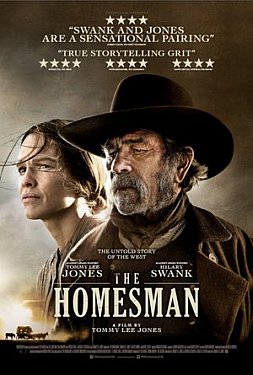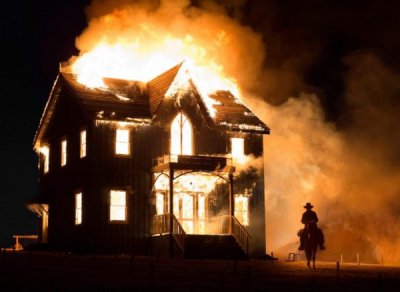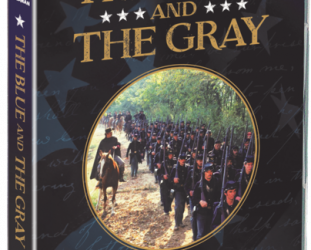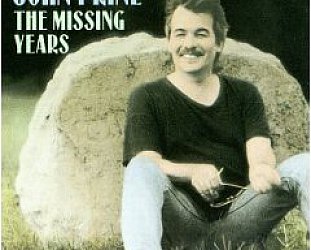Graham Reid | | 2 min read

Women are rarely central figures in Westerns and are most often either inconsequential or barely visible.
In many they actually don't appear at all.
Which makes this grim, frequently troubling and sometimes narratively unexpected film directed by Tommy Lee Jones (who also plays the grizzled, pragmatic and mostly self-serving George Briggs) such a surprise.
At its core it is the story of people on the far edge of civilisation in the Nebraska Territories in the 1850s. The enemies out there are not outlaws and Indians but the ice cold winter, isolation, diphtheria and the unforgiving land where crops won't grow and a living is eked out . . . sometimes.
Out there in this endlessly flat landscape is 30-year old Mary Bee Caddy (Hilary Swank) who is making a go of it but desperately wants a husband, for pragmatic as much as emotional reasons.
That she is rejected by one young man – the only available one it appears – for being plain and bossy is yet another blow.
Even so, she is faring batter than some of the women, three of whom have gone insane and require taking back across the vast wasteland and the Mississippi to Iowa. There they will be taken in by a preacher and his wife (Meryl Streep in an effortlessly brief role, her daughter Grace Gummer one of the women) before being shipped back East.
The job of carrying these mad, mostly mute and irreparably damaged young women falls to Caddy who, by chance, encounters the ne'er-do-well Briggs in a noose at the end of a rope and in exchange for his rescue binds him to her for the journey which may take weeks.
The land is inhospitable, there is a brief encounter with Indians, food is increasingly scarce, one woman makes off in the night . . .
 This emotionally
bleak story – based on the book by Glendon Swarthout, who also
wrote They Came to Cordura (made into the famous Gary Cooper/Rita
Hayworth journey-Western movie) and The Shootist adapted for John
Wayne's final film – is unsparing in its personal horror as the
madness of the three pitiful women seems to be no less than that of
the others.
This emotionally
bleak story – based on the book by Glendon Swarthout, who also
wrote They Came to Cordura (made into the famous Gary Cooper/Rita
Hayworth journey-Western movie) and The Shootist adapted for John
Wayne's final film – is unsparing in its personal horror as the
madness of the three pitiful women seems to be no less than that of
the others.
Each of the central figures is damaged in their own way . . . but a sudden event two-thirds the way through changes the character of Briggs and a further series of damning events are set in motion.
The landscape – always a character in itself in the great Westerns – is impressively shot and framed by Mexican cinematographer Rodrigo Prieto (8 Mile, 21 Grams, Babel, Biutiful and Argo among his many credits), Briggs' dialogue is tight-lipped and wry, and the both Swank and Jones are persuasive people, if a little overdrawn.
Years ago after we'd watched some classic Western my wife made a comment about the beautiful horses.
I said, “There were horses?”
You might also say the same of women in Westerns.
Not this time.
They are centreframe . . . and their plight in the indifferent weather, landscape and emotional territory of this particular West is central. And sad.
Another dark ride.
For more Westerns at Elsewhere start here.





post a comment